In the world of coffee, creamer is often regarded as an essential ingredient for enhancing flavor and texture. In this article, we explore alternatives to traditional coffee creamer, which is largely composed of vegetable oil. Our selections look beyond the basics, such as milk or soy milk, in hopes of inspiring new ideas or concoctions. The alternatives listed cater to customers with different dietary preferences, those who seek luxe qualities, as well as to adventurous customers searching for a brand new experience.
Plant-Based Milk
Cashew Milk
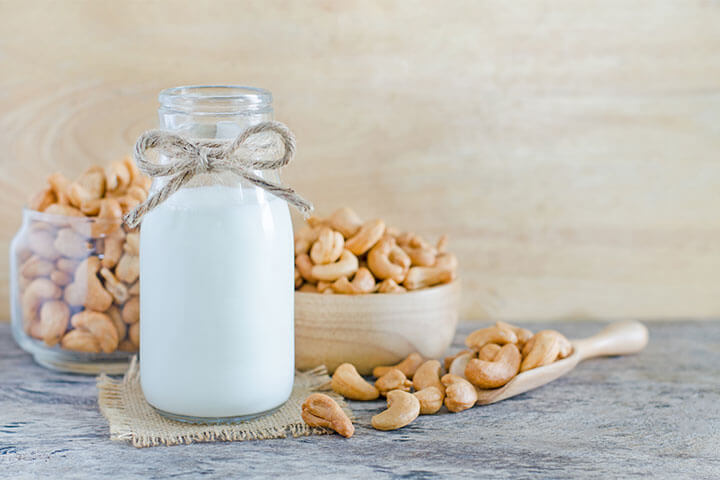
Cashew milk fans enjoy its healthy composition and creamy texture. Its mild flavor imparts a subtly sweet taste that is both on-trend and complementary to most every coffee pairing. On the other hand, cashew milk curdles if handled incorrectly. Prevent curdling through pre-heating, using coffee beans with lower acidity, choosing stabilized milk labeled “barista blend” or “coffee-friendly”, or by employing gradual mixing techniques.
Hemp Milk

Behind hemp milk’s earthy flavor and subtle nuttiness, lies nutritional advantages. Hemp milk delivers essential omega-3 fatty acids, complete proteins, and key minerals. Not to mention, its stability in coffee and ability to produce foam gives it a leg up on some nut-based milks.
Macadamia Milk

Known for its rich and buttery character, macadamia milk imparts a subtle sweetness and graceful texture. Baristas and guests alike enjoy its resistance to curdling, its ability to form dense and stable foam for latte art, and its abundance of heart-healthy monounsaturated fats, vitamins, and minerals.
Oat Milk
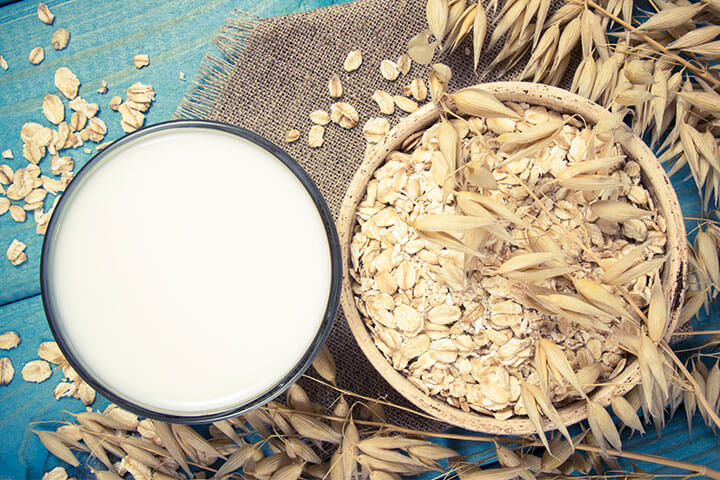
Oat milk creates a creamy texture that froths beautifully and plays well with coffee, enhancing its natural flavors without overpowering them. Compared to other plant-based alternatives, oat milk is thicker and creamier. It also froths well, making it a popular choice for lattes and cappuccinos.
Pistachio Milk
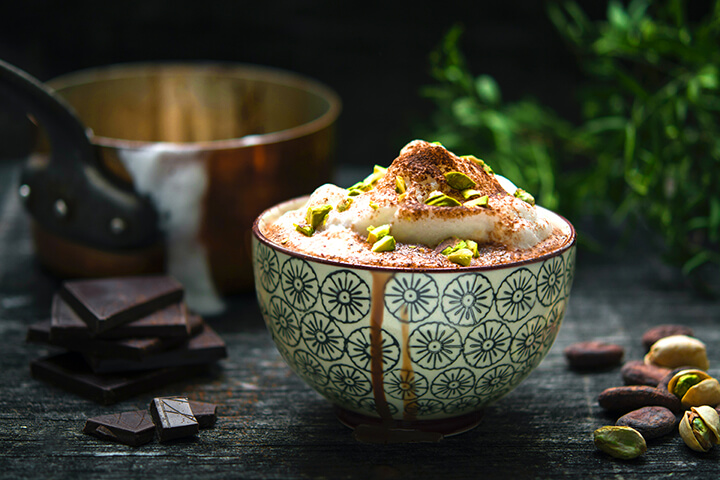
This green milk features a delicate nuttiness, subtle sweetness and earthy hints that complement your coffee’s richness without stealing the show. Pistachio milk also won’t curdle on you. It has a higher fat content and natural stabilizers to keep things smooth. At present, it’s a rare find—a quality customers associate with luxury. Froth-art approved.
Indulgent Alternatives
Coconut Cream
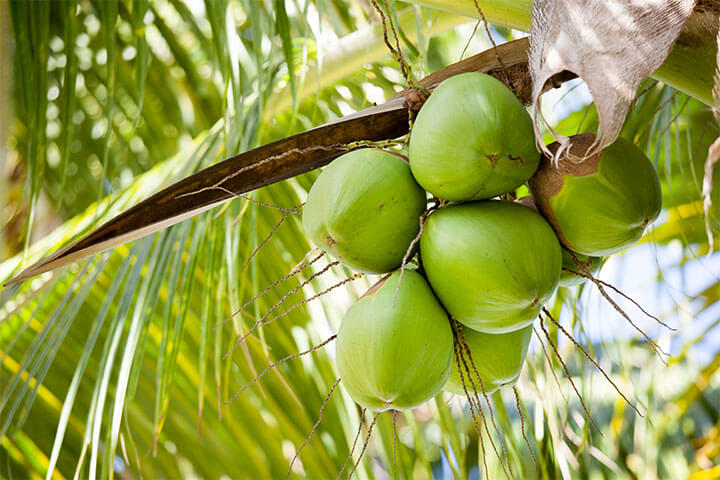
Capture the essence of palm trees and sunshine in a cup of coffee by adding coconut cream, the thick layer that’s skimmed from chilled coconut milk. Its rich tropical flavor is an undeniably superb companion for dark roast coffee, adding indulgence without overwhelming the coffee’s natural bitterness.
Flavored Butter
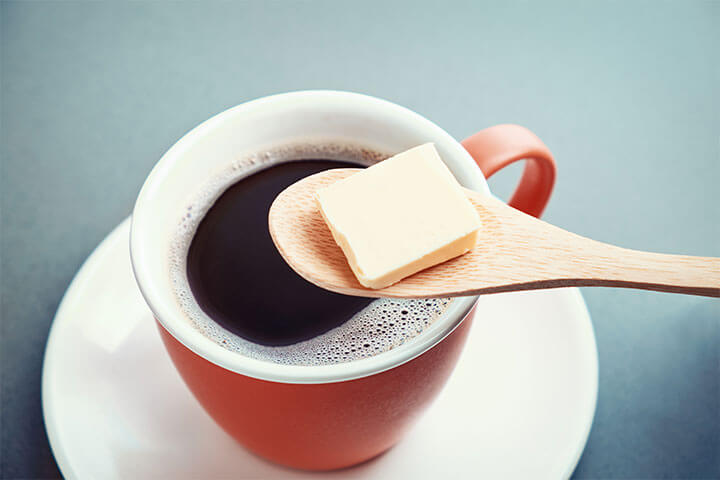
For guests seeking a unique flavor experience that keeps them satiated, try offering flavored butter. Flavor infusions like cinnamon, honey, maple, vanilla, or hazelnut introduce a decadent taste to your coffee, turning up the flavor while complementing its bitterness.
Irish Cream Liqueur

Irish cream liqueur combines Irish whiskey, cream, and sweet notes of chocolate and vanilla. This sweet liqueur captures a rich flavor, an enhanced aroma, and a pleasant warmth while providing a mild buzz.
Sweetened Condensed Milk

Coffee fans love sweetened condensed milk for its divine velvety texture that sets it apart from traditional creamers. You’ll find it in beverages such as Vietnamese iced coffee or horchata, a traditional Mexican drink made from rice, condensed milk, cinnamon, and sugar.
Flavor-Infused Whipped Cream
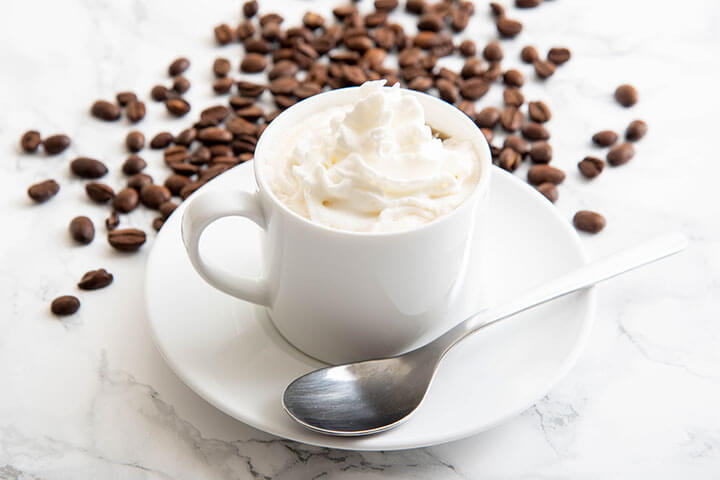
The visual appeal, flavor enhancement, temperature play, and textural contrast all contribute to the charm of whipped cream in coffee. For a playful twist, consider flavored whipped creams such as cardamom rose, lavender honey, spiced chocolate, citrus saffron, or maple bourbon.
The Produce Aisle
Banana Puree
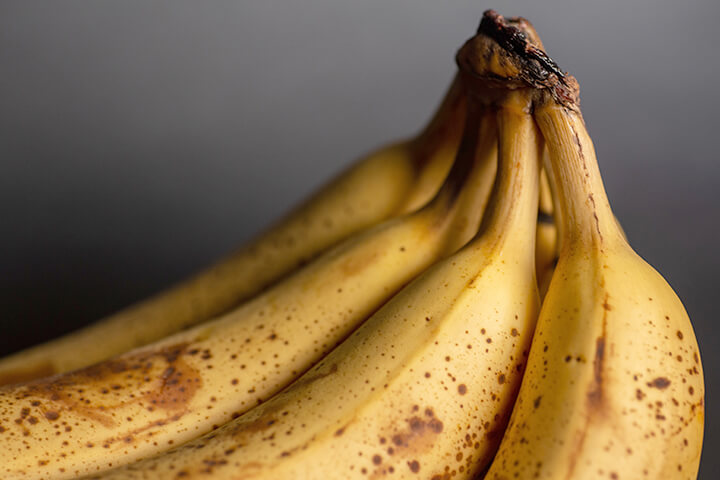
Banana puree has emerged as a surprising addition to coffee. This unexpected pairing of banana’s sweetness and creaminess with coffee’s bitterness creates a harmonious balance of flavors. Moreover, for health-conscious coffee drinkers with a sweet tooth, banana puree naturally sweetens your coffee, eliminating the need for processed sugar.
Sweet Potato Puree

It may sound unusual, but sweet potato puree adds a subtle sweetness, creaminess, and a hint of earthy flavor to coffee. In Korea, sweet potato lattes, known as “goguma lattes” do not contain coffee. Instead, they combine sweet potato puree with milk and spices like cinnamon or nutmeg.
Without doubt, if your customers have kids in tow, this is the perfect grown-up drink to serve your littlest guests. However, for adults who need a pick-me-up, just add coffee. For a fun American twist, try combining a shot of espresso and marshmallows in a goguma latte, for a sweet potato pie beverage.
Additional Overseas Inspiration
Ghee (Clarified Butter)

Drawing inspiration from parts of Asia and Africa, ghee coffee is gaining popularity for weight loss, and people who adhere to a ketogenic or paleo dieters. To prepare ghee coffee, simply blend a teaspoon or two of high-quality, grass-fed ghee with freshly brewed coffee.
Proponents of ghee coffee cite benefits, such as sustained energy from medium-chain triglycerides (MCTs), digestive support due to its butyrate content, satiety for appetite regulation, and antioxidant properties from conjugated linoleic acid (CLA).
Vietnamese Egg Coffee
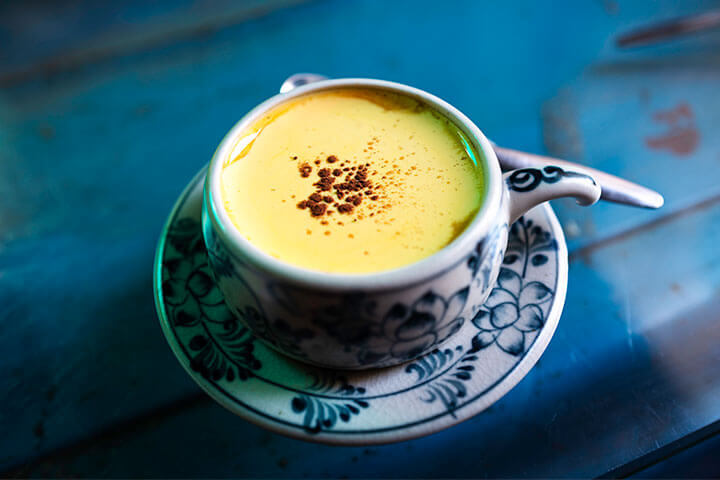
Egg coffee, known as “cà phê trứng” in Vietnam, is a fun twist on the classic cup. To prepare, egg yolks are whisked with sugar until they become creamy and luxuriously frothy. Then, this mix is added to strong black coffee. The result? A rich, velvety brew balanced against a hint of sweetness and a unique texture that’s bound to make your taste buds do a little happy dance.
Moroccan Florals & Spice
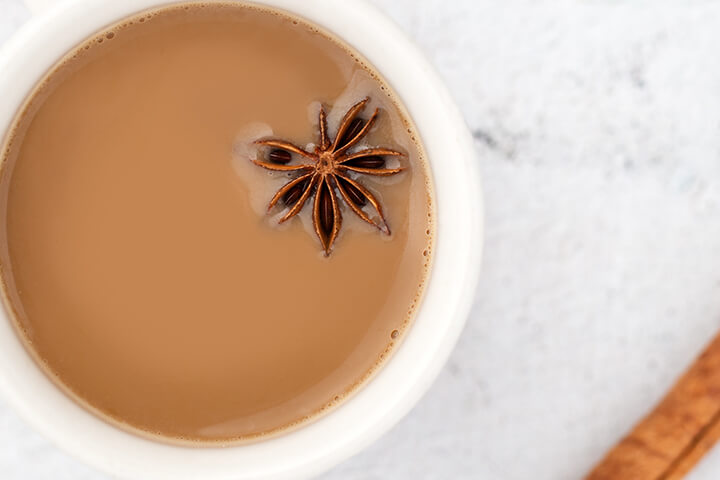
Moroccan coffee often employs aromatic spices with floral water, offering a captivating and fragrant twist on the standard coffee routine. Delicate floral notes from orange blossom and rose water balance the coffee’s bitterness, while spices like cinnamon, cardamom, and ginger add warm, earthy, and slightly spicy undertones.
Scandinavian Kaffeost
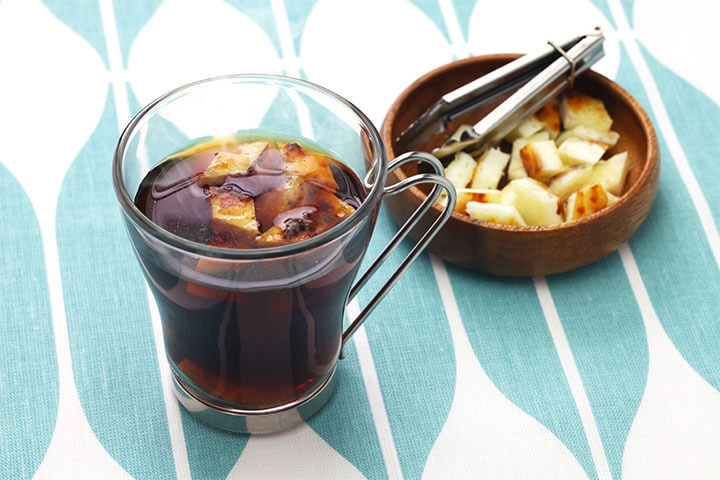
Hailing from Nordic and Scandinavian regions, Kaffeost or “cheese coffee” involves dunking firm, aged cheese cubes into hot coffee. After the cheese cubes soften, you have a creamy and slightly salty concoction. This tradition appeals to people for its umami-enhanced coffee, unique texture contrast, and cultural ties.
Wild Orchid Tubers
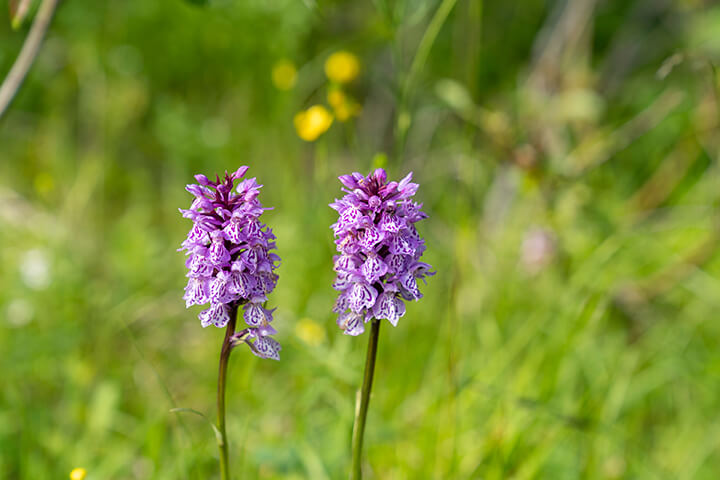
Salep is a warm drink crafted from powdered wild orchid tubers which thickens coffee while delivering floral essence. Steeped in tradition, Salep, derived has found a special place in the hearts of those in Turkey and the Middle East. As for all ingredients your business purchases, remember to source responsibly.
A New Coffee Routine

Exploring alternatives to traditional creamer broadens flavor possibilities for the foodservice industry. From creamy plant-based options to florals and spices, our choices are as diverse as the coffee-loving community itself. Of course, the list we’ve presented isn’t exhaustive and creativity abounds. With that in mind, what coffee creamer alternatives do you prefer to work with? Let us know in the comment section!

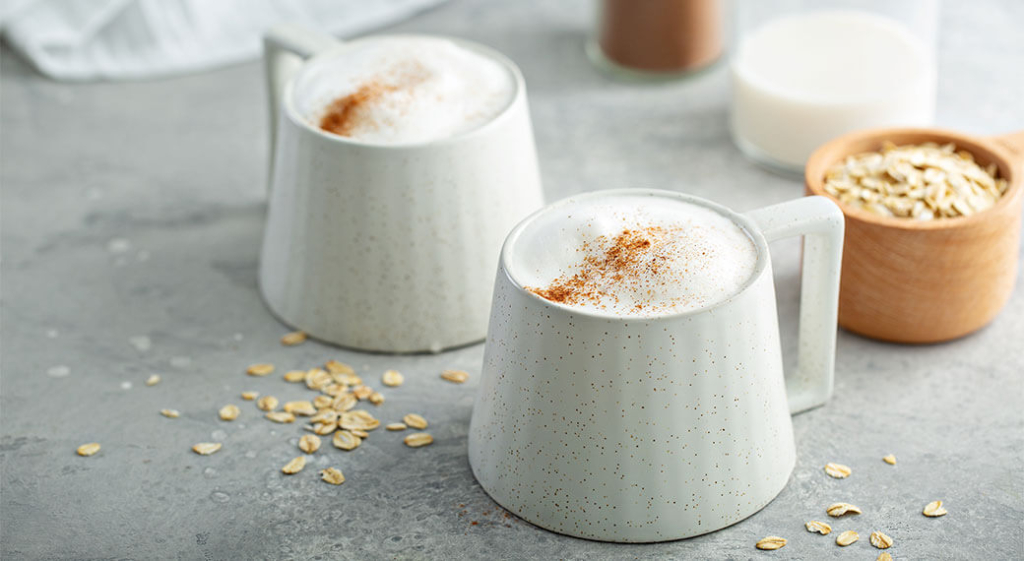


Bonjour
Substitutes for coffee mate